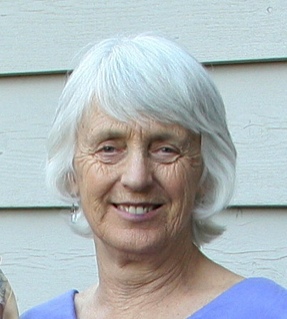The Practice of Peace
 The very first question that I was ever brave enough to ask Babaji was, “Babaji, if you had only two words to say to the people of the world, what would they be?” And without hesitation, he wrote “Attain Peace.”
The very first question that I was ever brave enough to ask Babaji was, “Babaji, if you had only two words to say to the people of the world, what would they be?” And without hesitation, he wrote “Attain Peace.”
Sitting on the dock at the Oyama retreat, overlooking beautiful Lake Osoyoos, Babaji was being interviewed by a group of staffers from “New Directions” magazine in Vancouver. Being a staffer of an alternative newspaper in Bellingham, as well as simply curious, I had crept over to listen. When the group was finished, and beginning to pack up their microphones, tape recorders and cameras, feeling dreadfully out of place and more than a little nervous, I asked my question! And heard the three syllables that penetrated so deeply that they’ve become a guiding light for me throughout the forty years since then. “Attain Peace.”
After the glow of his response, many questions came to mind: “What is peace?” “How does one attain it?” “Does it just come or do you have to work at it?” “If you have to work at it, how?” And through the years the answers have gradually come – through Babaji’s chalkboard, through life experience, and as a result of (guess what?) regular sadhana!
What is peace?
Over the years, Babaji gave us quite a few hints about the state of peace. Here are a few:
“Peace is a state of mind free from all desires. It’s also called supremely contented.
Still these are words. Reality is your own experience.”
“There is no peace in the world. If there is any peace, it is only in meditation.”
A realized being is one whose presence creates a feeling of peace.
So peace is a mind free from desires, which can be experienced in meditation, and felt in the presence of a realized being. He also tells us that:
“We are born from peace, and we go back to peace. But the thoughts
that are generated by our desire, attachment and ego
disturb that peace and trap us in the cycle of birth and death.
Regular sadhana (spiritual practice) or surrender to God
are the main paths by which we return to peace.”
The Practice of Peace
Which suggests that not only is peace a state of being, something that just arises by itself, but that it’s also possible to create peace through our daily thoughts and actions. Regular sadhana and surrender to God are two paths to peace as we move through our journey of life. Our thoughts and actions actually do make a difference as to whether or not we feel peaceful.
So how do we go about this in a practical sense? We make a habit of regular sadhana; we allow life to flow through us, surrendering to “what is” while at the same time making efforts at our self-development. Again we go to Babaji’s writings for more hints:
The aim of life is to attain peace. No one can give us peace. We can’t buy or borrow it.
We have to cultivate it by practicing yama and niyama.
A person can attain peace by simply developing good qualities.
The highest activity is to bring divine presence in your life. It produces eternal peace.
So here he offers us methods: developing good qualities, bringing divine presence, by practicing yama and niyama (the restraints and observances of Ashtanga Yoga).
In my own life, developing good (positive) qualities has been a cornerstone of my practice of attaining peace. Early on I noticed that when I performed a “bad” or negative action (whether stealing a package of gum or expressing anger toward another person), I was left with not only sorrow at wounding another, but also feelings of guilt and shame that had a negative impact on my own psyche. And thus I began to see how the mind is constantly assailed with both negative and positive thoughts. I got what I wanted (the gum or the release of anger), but was left with the residue of sorrow, guilt and shame.
The Bhagavad Gita depicts this battle; the “war” which is usually seen as the opposite of peace. This battlefield of war is a mirror image (a reflection) of the battle that is waged in each individual mind, the inner war between our positive and our negative mental tendencies, our samskaras, which manifest in our mind as thoughts. Positive samskaras include an attitude of service, practice of meditation, the ability to smile when things are tough, making an effort to help a stranger, and moment-to-moment awareness. Negative samskaras include an urge toward revenge, a feeling of jealousy, the desire to take more than we need, and the flash of irritation that foreshadows anger.
Babaji was asked, “You have said that our highest duty is to get peace. Yet Sri Krishna was advising Arjuna to fight and kill his relatives. That doesn’t sound like a way to gain peace.” His reply: 1) Arjuna was a prince. 2) Symbolically, the jiva. As a prince, it was his duty to remove bad elements who were disturbing peace in the kingdom. So Krishna was right to tell him to fight. As a jiva, we have to fight with our negative thoughts in order to attain peace.
“Fight with our negative thoughts:” So that’s where the battle lies! The Gita describes the inner struggle to develop a positive, pure mind that is free from anger, fear, jealousy, revenge, and filled with thoughts of compassion, love, joy, gratitude, and patience.
Building a peaceful heart encourages us to take our sadhana – our spiritual practice – off the cushion, off the mat, and bring it into each and every precious moment of our lives.
The battle involves regular sadhana (spiritual practice each day), watching how the mind is drawn to the negative and creating the intention to practice peace.
As Babaji says in his translation of Yoga Sutra II:33: “The mind becomes serene by the cultivation of feelings of love for the happy, compassion for the suffering, delight for the virtuous and indifference for the non-virtuous.” When we see how quickly we react to uncertain conditions, to a spark of violence in another, or to the pull toward gambling, or lustful desires, or unhealthy appetites, we are able to pull the mind back and remind ourselves of the positive path to peace which we wish to walk.
We have to cultivate positive qualities in our day-to-day life.
Life is not coming but going. Every single second is flying away from our lives.
If we are not trying to attain peace, then we have lost, are losing and will lose
the precious seconds, minutes, hours, days and years of our lives.
And when we realize or attain peace, those around us will feel that peace.
If you are in peace, then others around you will feel peace.
So your best effort should be to work on yourself.
Wishing you peace in your journey through life.
-Pratibha

Pratibha Queen is an Ashtanga Yoga instructor and Ayurvedic practitioner who lives in Santa Cruz. She is a member of DSS who attends Salt Spring Centre of Yoga retreats on a regular basis. All quotes above are from the writings of Baba Hari Dass.
